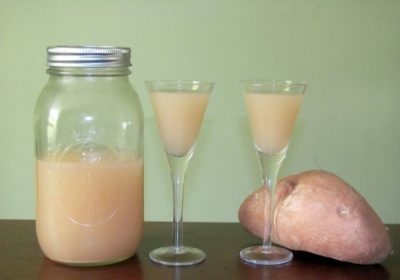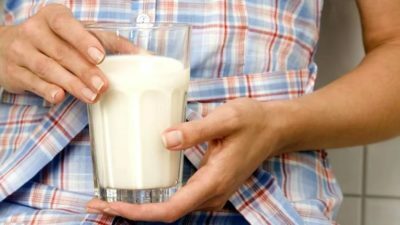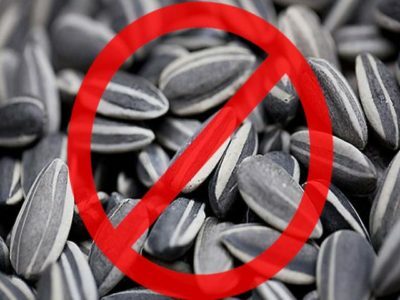Pancreatitis, symptoms and treatment of it is directly dependent on the severity and the extent of organ damage. Many patients are interested in the question of what is pancreatitis and how to treat it. It is an inflammatory disease that occurs in the pancreas.

This disease are particularly at risk are people who are prone to excessive consumption of fatty and junk food. At this causes pancreatitis is not limited to, strongly influenced by alcohol. Destructively acting on the body, these bad habits activate generation of proteolytic enzymes that cause inflammation.
Description of the disease
Many people are concerned about what kind of disease. Pancreatitis pancreas - is a serious disease, which is accompanied by an active release of toxins and enzymes. These substances can cause disorders of the organs such as the liver, heart, brain, kidneys, lungs. If you do not see a doctor, then at a certain stage of pancreatitis in adults can occur bleeding in the pancreas, which in turn can provoke death. Gland is located near the aorta and other vital organs, so the inflammation extends to them.
In some cases, it becomes a cause of cancer.
Pancreas - is a vital organ that is protected by 12-duodenum. Its functions include:
- participation in the work of the digestive system;
- resolution of the metabolic processes in the body.
Iron is responsible for the production of enzymes such as amylase, lipase, protease, and pancreatic polypeptide. Once the body receives food, pancreas produces these elements, which then appear in the small intestine. They help him assimilate the nutrients received from food and regulate the process of metabolism.
Thanks to enzymes, which are stored in the gland occurs digestion intestine, and its hormones are responsible for the regulation of glucose in the blood.
treatment of pancreatitis depends on the form of the disease.
Varieties can be the following:
- interstitial pancreatitis;
- pancreatitis;
- pancreatic;
- acute holetsistopankreatit;
- purulent pancreatitis.
Accordingly, the cause of the disease also depend on the form. The main source - this outflow of digestive juice and other items in the area of the small intestine. Is the destruction of the glandular tissue and surrounding blood vessels and other organs. As a rule, it provokes the flow of bile stones and cancer, overlapping body duct.
When overlap occurs pancreatic duct, at its enzymes used food still in it, as a result of digestion begins directly in the pancreas. Enzymes begin to destroy the prostate tissue.
People with erratic diet and bad habits - the main victims of the disease.
According to statistics, pancreatitis pancreas susceptible to the following categories of citizens:
- 40% - those who abuse alcohol (up to 70% in some regions of Russia);
- 30% - complications of cholelithiasis;
- 20% - the result of obesity;
- 5% - people with disorders of the digestive system;
- 4% - indiscriminate use of various drugs and poisoning;
- 1% - unknown causes.
Causes of
Pancreatitis in adults - is a serious disease that affects the vital functions of the organism. Pancreas - is one of the principal organs of secretion, its length - 15 cm, weight - 80 g
Its main mission - it is important to develop the digestive activity of enzymes and cells. It is necessary to learn all carbohydrates are received with food, proteins and fats. For example, trypsin, which highlights the pancreas, is needed for protein digestion, and lipase - to better assimilate fats.
Factors influencing the causes of the disease, may be the following:
- Wrong way of life of man: he abuses alcohol, smokes, does not comply with the sleep mode.
- Power of the individual: he prefers fried, spicy, fatty foods.
- Hereditary, chronic diseases.
The root of the problems in the man if he does not keep track of your health, it leads to the most disastrous consequences.
Pancreatitis: causes are as follows:
- disturbance in the gastrointestinal tract, most commonly occurs in the form of gastritis, ulcers, attenuation of motor function;
- abuse of spirituous beverages;
- hormonal failure: usually in pregnant or diabetic;
- regular use of drugs, such as furosemide, estrogens, azathioprine, etc .;
- obesity;
- vegetables and fruits with a high content of pesticides and other chemical additives (activate isolation enzymes);
- damage in the abdominal region, blunt trauma, wound or unsuccessful surgery on the duodenum;
- viral disease, such as smallpox, intestinal sepsis, mumps and chronic tonsillitis;
- allergy;
- disorders of fat metabolism;
- poisoning: food, alcohol, or chemical;
- atherosclerosis;
- hypertension;
- pyo-inflammatory processes;
- genetic predisposition.
All this leads to an outflow of prostate juice. The juice is only in its tissues, thus it does not fall into the duodenum. This is the root cause, which leads to many ailments associated with the pancreas and intestines, including to pancreatitis.
Doctors say that the most common causes of pancreatitis in the body - is alcoholism. Most patients of pancreatic inflammation is observed after regular alcohol poisoning.
According to statistics, at least on this disease complain obese and cholelithiasis.
Inflammatory process itself does not pass in isolation from other organs. As a rule, it is included in the pathological processes in all diseases, especially of the digestive system. Therefore, when the first signs of pancreatitis, treatment should begin immediately in order to avoid complications.
Sometimes due to some genetic disorders disease develops from the first days of human life.
Forms of pancreatitis
Pancreatitis is shared by the nature of the flow in the acute and chronic. The most severe type -pankreonekroz.
Depending on the cause of the disease form may be different and are manifested in different ways. And also the type depends on how to treat pancreatitis.
In the acute form is based on the digestion of the gland's own tissue, it stimulates pancreatic growth, edema formation, necrosis of tissue. To date, this disease ranks third among the surgical procedures.
The first signs of pancreatitis in the acute stage can manifest themselves in the form of increasing pressure in the pancreatic body.
The acute stage of pancreatitis:
- Very severe pain in the abdominal area, which responds in the left upper quadrant or in the whole of the upper body. It can last for several hours.
- Vomiting, diarrhea.
- Very dry skin and become sharpened features an oval face.
- Sometimes there is constipation, it is accompanied by bloating.
- The pronounced pain, which can cause the patient to collapse or shock.
- Girdle pain.
- Due to the fact that the pain may spread to the chest, in the right shoulder area, many confuse an attack of acute pancreatitis with myocardial infarction.
- Elevated blood pressure can swings from high to low.
- Heart palpitations.
- Dyspnea.
- In the navel area and bluish spots may appear on the back.
- Greenish-blue tint in the groin area.
Acute pancreatitis - the consequences:
- jaundice;
- acute purulent inflammation;
- liver failure;
- bleeding.
Chronic pancreatitis - a progressive inflammatory process which leads to the formation of fibrosis. Trypsin, and lipase allocated gland with a considerable delay, the connective tissue loses its elasticity and expands. Circulation in this form of the disease is disturbed.
There are primary and secondary types of chronic pancreatitis. Secondary occurs due to prolonged gastritis, cholecystitis and other stomach disorders. Each of them is able to grow in parenchymal fibrosis, which can not be stopped. If patients are not treated from acute pancreatitis, the disease may progress to a chronic stage.
In most cases, the type of chronic pancreatitis suffers the male half of the population aged 30 to 50 years who have previously had problems with the pancreas.
Pancreatic necrosis - is necrosis of pancreatic body tissues. Due to the fact that iron loses its protective properties during pancreatitis, its parts die. The patient's body produces inflammation that gradually melts and dissolves small foci of necrosis. Large pockets depart from the surrounding tissues. If no action is taken, the distribution area is full of microbes that trigger the development of purulent complications. It's all very dangerous to human life, ie. A. Bleeding can occur, the total defeat of microbes.
symptoms
Many people are interested in the question of how to manifest pancreatitis. Chronic pancreatitis - symptoms, causes. By provoking factors include:
- excessive consumption of alcoholic drinks, cigarettes;
- cholelithiasis, stones in the bile ducts;
- infectious diseases, e.g., hepatitis B;
- cystic fibrosis;
- genetic predisposition;
- taking certain drugs, such as mercaptopurine;
- allergy;
- injury to the pancreas;
- unbalanced diet;
- chronic intoxication with lead, mercury, phosphorus, arsenic.
The symptoms of the chronic form of pancreatitis are shown as follows:
- Severe pain in the stomach, passing in the area of the shoulders and waist.
- The nature of pain - shingles.
- Painful sensations are amplified in the supine position, weakened in a sitting posture, when a person is inclined slightly forward.
- Cramps after eating greasy, spicy, heavy food.
- Regular diarrhea.
- Retching, belching.
- Weight loss.
- Poor appetite.
Severe form of pancreatitis - Symptoms and Treatment in Adults:
- Fever, vomiting, irregular stools.
- Purulent and enzymatic melting gland tissue to form one or more cavities.
- If pancreatitis treatment has not been carried out, it formed multiorgan failure, it dies in the human body.
Treatment takes place only under the supervision of a specialist. The patient must unconditionally fulfill all of its recommendations.
Indirect signs of pancreatitis in a patient:
They can only be detected by laboratory methods and with the help of ultrasound. The results reflect the analysis of positive following points:
- The high concentration of sugar in the blood.
- The presence of sugar in the urine of the patient.
- Rapid erythrocyte sedimentation.
- Mostly anemia.
- A malfunction of the carbohydrate metabolism.
- Leukocytosis.
- High activity level of juice in the urine, and blood.
- The presence of stones in the pancreas.
- Increasing the size of the pancreatic body.
- Wide flow.
The manifestation of the external signs:
- sudden weight loss:
- peeling, dry skin;
- yellowness of the mucous membranes and skin;
- small red spots round shape;
- increased sweating;
- pale skin tone;
- the presence of abundant plaque on the tongue.
Clinical symptoms:
- sudden severe pain;
- vomiting of bile;
- jaundice;
- appearance pseudocyst;
- fatty fecal discharge;
- dyspepsia.
In the acute form of the disease the irritation of the abdominal cavity is observed, directly dependent on the stage of inflammation.
This is possible in the presence of necrosis and hemorrhage in the patient's body.
Forms of pancreatitis: symptoms, treatment, diet, each type of the disease are characterized by their features. It is important to time to see a doctor when the disease has not yet passed into the serious stage.
Diagnosis and treatment
Many people are concerned about how to cure pancreatitis, and what can be complications. Before specialist prescribes his patient appropriate treatment of pancreatitis are diagnosed. Apply such methods of inspection:
- Blood tests, urine tests, to determine the level of activity and the amount of enzyme alpha-amylase.
- Ultrasound diagnostics. It helps to determine the swelling body and the area where the accumulated pus.
- CT scan. It shows the most severe form of pancreatitis - pancreatic necrosis.
- Laparoscopy. It helps to identify the location of edema, serous exudate and necrosis.
Treatment for pancreatitis is possible only in conditions of a hospital. Patients underwent surgery, after which the doctor uses a therapeutic method of treatment and monitors the status of the person.
Being in the intensive care ward is necessary, because for the first time after the operation there is a high level of risk of complications that can trigger lethal Exodus.
Regimen pancreatonecrosis:
| fluid collection in the abdominal cavity | Ultrasonography | Exudative lesions of the abdominal area | |
| Surgical operation (incision of the abdominal wall) | Diagnostic puncture under ultrasound guidance | Exudative lesion omental | Diagnostic puncture under ultrasound guidance |
| Laparoscopy (surgery) | Diagnostic puncture under ultrasound guidance | Drainage under ultrasound guidance | nonsurgical treatment |
| nonsurgical treatment | Drainage under ultrasound guidance | Surgical operation (incision of the abdominal wall) | nonsurgical treatment |
The most advanced forms of pancreatitis, the treatment which takes place in several steps:
- Operative intervention (sometimes removed spleen or gallbladder disease if the reason lies in them). Affected organ in severe cases removed completely, in more favorable - in part.
- Therapy medications and a specific diet.
- Rehabilitation period.
The patient is under the supervision of staff.
Many people are concerned about what this disease is treated independently. There are medications for the treatment of pancreatitis, as an additional method.
These drugs help to slightly improve the condition of the patient and eliminate the cause of the inflammation, but not its consequences.
When the patient arrives at the hospital, the following tools are used:
- frozen plasma and albumin;
- Dextran, Pentoxifylline (improve microcirculation);
- Furosemide (toxins from the body).
For braking functioning pancreas and administration of proteolytic enzymes doctors use:
- omeprazole;
- somatostatin;
- strict bed rest;
- limotherapy (duration 5 to 12 days);
- gastric lavage with cold water;
- cold compresses.
For the destruction of pathogenic flora resorted to:
- cefepime;
- Levofloxacin, gatifloxacin;
- Imipenem, meropenem.
Many patients are concerned about how much treated pancreatitis. This process is the acute form takes from 3 to 7 months of dieting and chronic - many years or a lifetime.
There are folk remedies for treating pancreatitis. However, to resort to them should be only with the permission of the attending physician.
Once the disease is treated with the help of herbs, such as:
- Immortelle. 2 tbsp. l. leaves of the plant need to pour a glass of cold water. Put on the stove and bring to a boil, then reduce the heat and let stand for 20-30 minutes. Before use, you must drain the infusion. Drink in the form of heat 1/3 cup before eating.
- Wormwood. 1 tbsp. l. chopped herbs pour a glass of water. The mixture should be brought to a boil and let it brew in a thermos for 45-60 minutes. Drink before meals for 1 st. l.
- Rosehip. It helps with chronic pancreatitis. In the 1: 1 mix berries and hot water. Then the mixture should be allowed to stand for 2 hours, after which the broth is ready for use. Dosage day: 400 ml.
Diet for pancreatitis
Since the causes of the disease include obesity and wrong mode of the day, it would be appropriate during the recovery period to comply with strict food:
- Compliance volume consumed fat (80 g) and carbohydrates (350 g).
- Refusal of smoked and roasted.
- Only diets.
- The interval between meals - 3 hours.
- Warm meal only eat shabby.
- There are small portions.
- It is necessary to slowly chew any food.
- It is forbidden to wash down the food.
Authorized products:
- salad, salad, boiled mashed carrots, beets, potatoes, zucchini, cauliflower, young beans;
- in chronic pancreatitis are allowed to use celery;
- vegetable soup, borscht;
- meat dish of boiled (preferably steamed) chicken or turkey, beef, fish;
- vegetable oil;
- dairy products with low fat yoghurt and cheese;
- cooked in milk porridge: oatmeal, buckwheat and pumpkin;
- egg protein;
- compote of fresh berries, dried fruits;
- sour apples;
- slightly stale bread.
Foods that are not allowed in the diet:
- alcoholic beverages;
- first courses with good high-fat and broth;
- heavy meat: pork, bacon, lamb, goose, duck, offal;
- sausage;
- oily fish;
- all sorts of preserves and pickles;
- roast;
- fast food;
- sharp and highly seasoned dishes;
- beans;
- mushrooms;
- green (spinach type);
- fruits with high sugar content, e.g., banana, grapes, figs, and so on. d .;
- sweets;
- beverages containing caffeine and gases;
- any bread, all the flour.
Cases of pancreatitis disease increasing every year. Not to join the ranks of patients who need to monitor their health and lifestyle. If, however, managed to avoid the disease is not, contact a qualified technician.



